Müll oder gut für ein Schlechtwetterprojekt?
Copyright 2019 © Troels Gravesen
I had promised myself I wouldn't engage in any more vintage stuff. I've done quite a few - and mostly been disappointed from what I found. However, going to the local electronics shop, I found two old boxes with these Isophon kits, probably from the mid Sixties, featuring an Isophon P25A driver and Philips AD 0160/T4 tweeters (World's Worst Dome Tweeter - which turned out not to be that bad after all). Two complete kits with screws, crumbled gaskets, ready made crossovers with "Anslusshinweise" and drivers in mint condition. I couldn't resist and after some haggling we found a reasonable price.
Coming home I did some google on "Isophon P25A" and found the heading
from a German discussion forum. "Müll oder gut für en
Schlechtwetterprojekt?" (Garbage or good for a bad weather project?).
Good question, but let's see. My comments and
conclusions below.
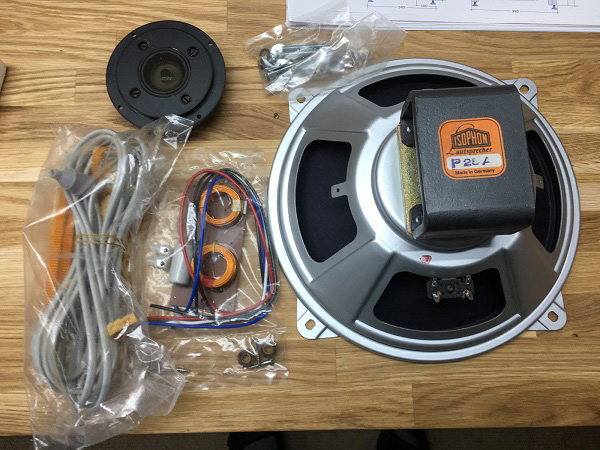
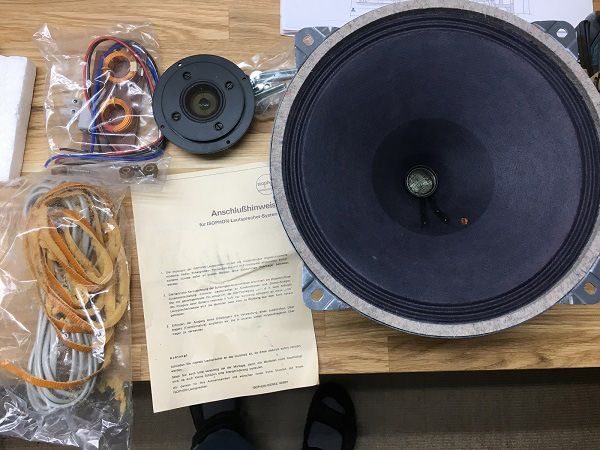
Click images above to view large

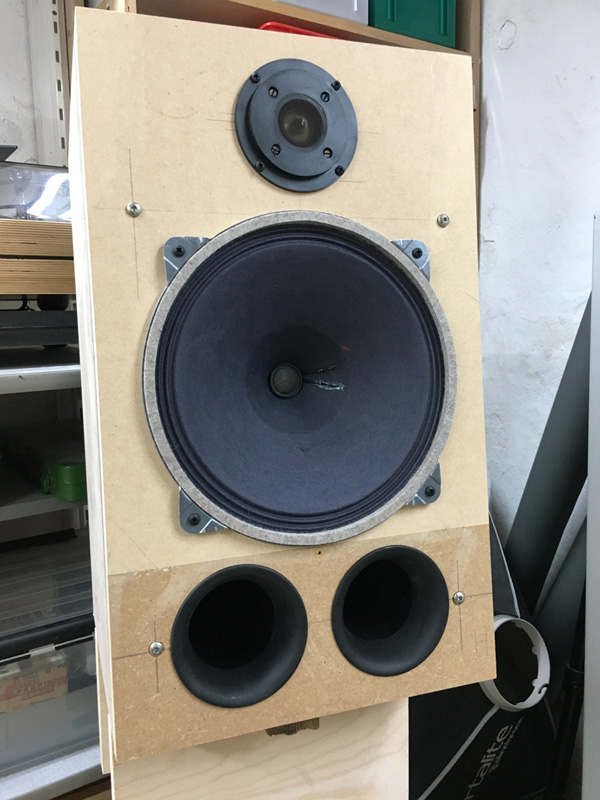
Isophon kit set up in 34 litre test cabs. I had some baffles made for a 10" bass driver and they could do for the Isophon and I made some holes for the Philips tweeter, which can do better from proper flush mounting. 34 litre bass reflex is certainly not ideal for a driver with a Qt well above 1. Based on Qt this driver may do better on an open baffle (read old time radio with open back).
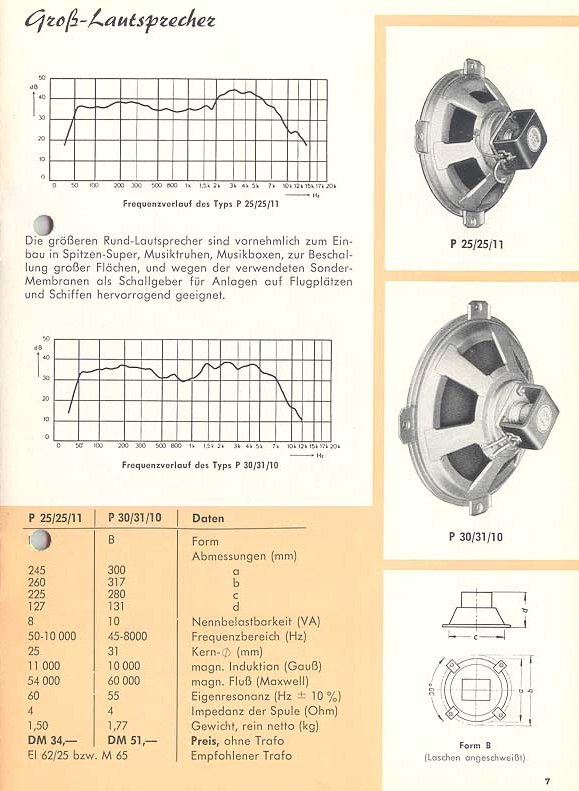
The P25 driver actually dates back to 1959!
Initial measurements
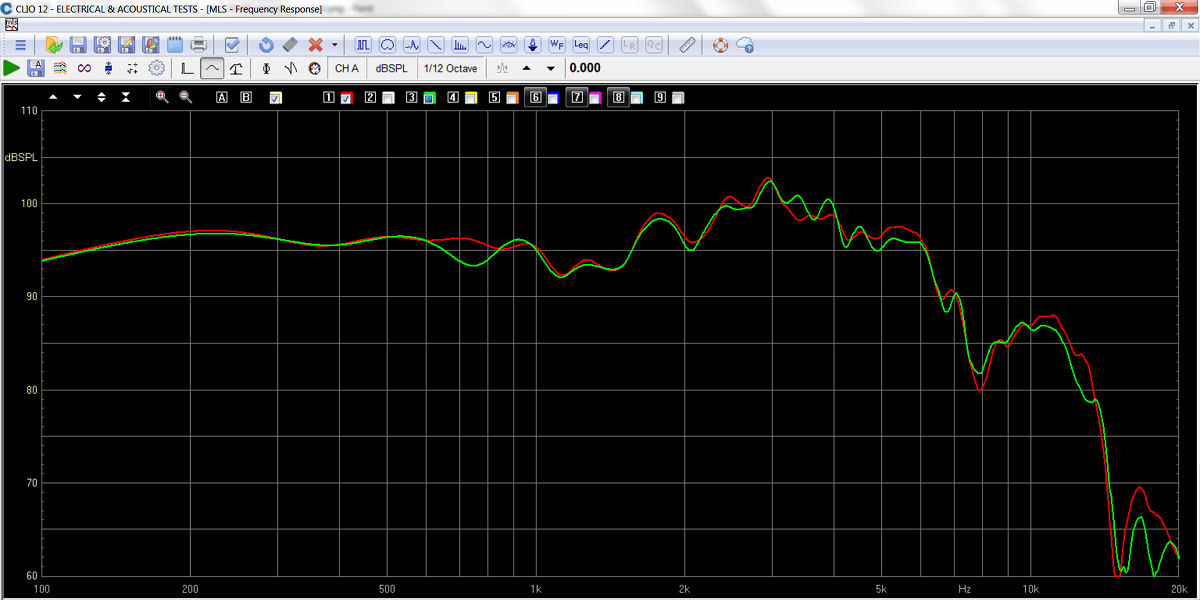
Frequency response of the two P25A drivers. Pretty consistent after all
these years and fairly smooth as well.
Sensitivity is a whopping 96-97 dB!
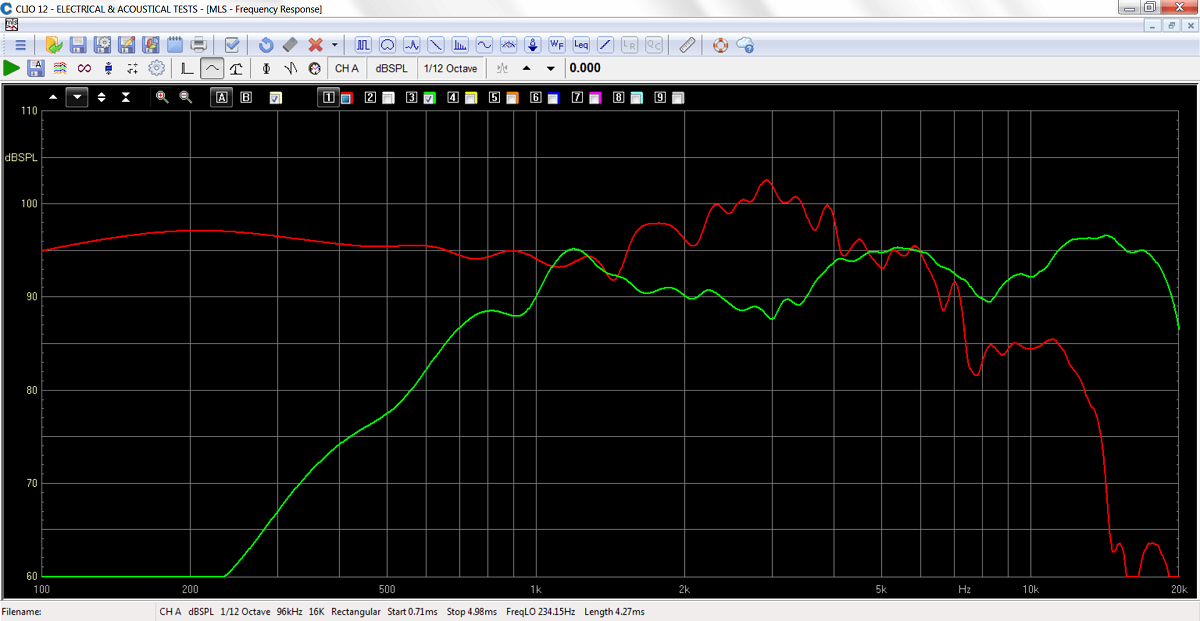
Response of drivers from the shown cabinet.
Tweeter response may be nicer from proper flush mounting.
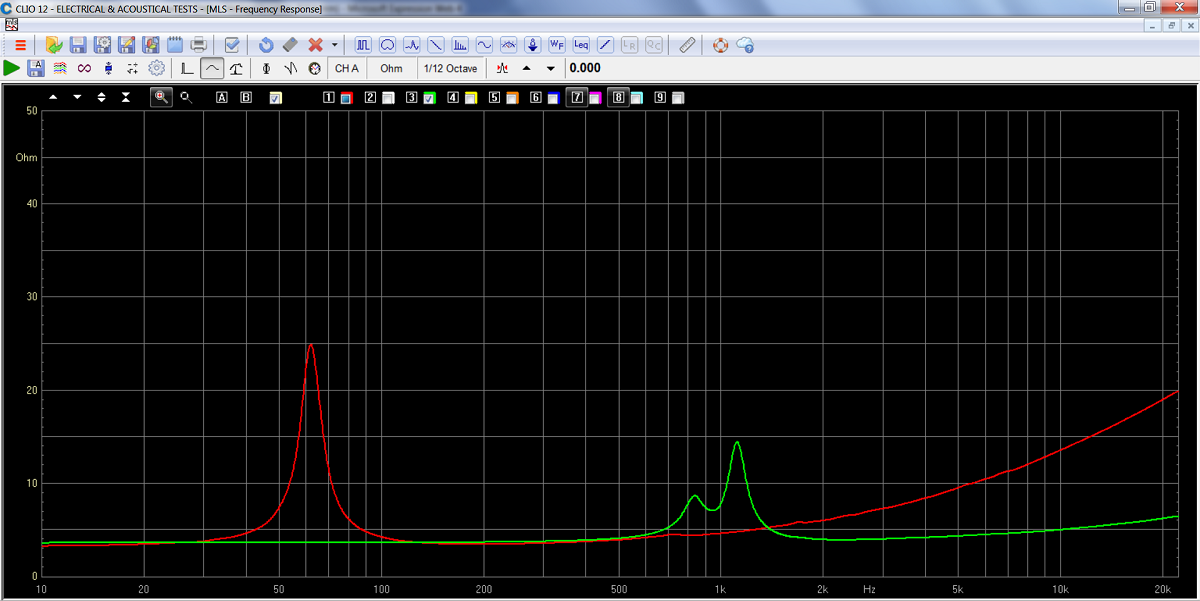
Impedance of drivers, P25A in open air,
tweeter green.
Based on the impedance of
the P25A I calculate Qt = 1.08 and Qm = 8.8!
Crossover as-is (v0)
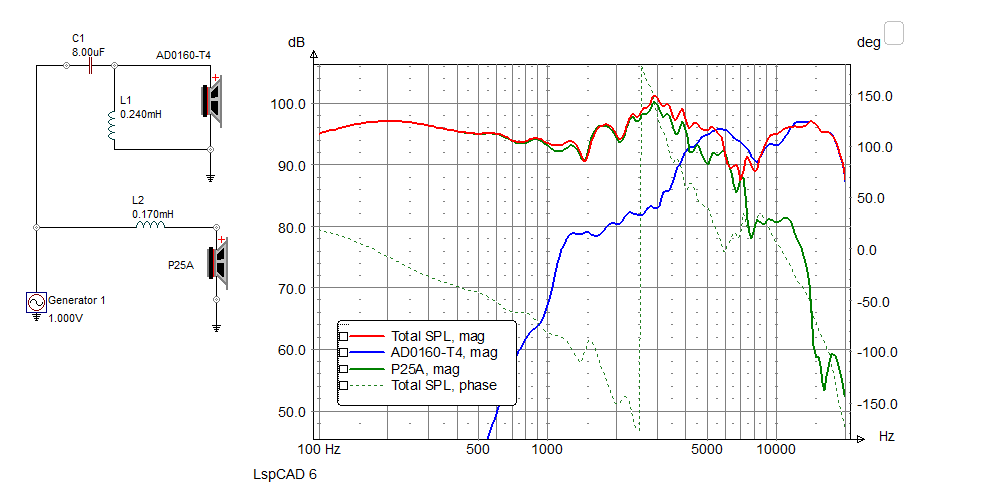
The simulation above is done with the supplied crossover values and dZ
set to 48 mm (the P25A is a deep driver!).
The kit crossover is indeed simple. 0.17 mH for the bass and a 2nd order
filter for the tweeter making a point of crossover around 4-5 kHz, quite
high for a 10" driver! The old Wicon caps had seen better days and the 8
uF turned out to be 20 uF and 50 uF(!). Fortunately I didn't burn the
tweeters when trying the original crossover before I checked the
capacitors.
Replacing the Wicon caps with modern PP CrossCaps it all turned out
nicely and they're ready for a listening session. The midrange is where
this kit excels. It's truly phenomenal. Having 346 cm^2 membrane area -
that really doesn't play much bass - does its thing on the midrange.
Clear, transparent and utterly dynamic. The bass is pretty much absent
from my 34 litre vented boxes. The treble is where things don't work.
Quite good on a few recordings, harsh and blurred on most others.
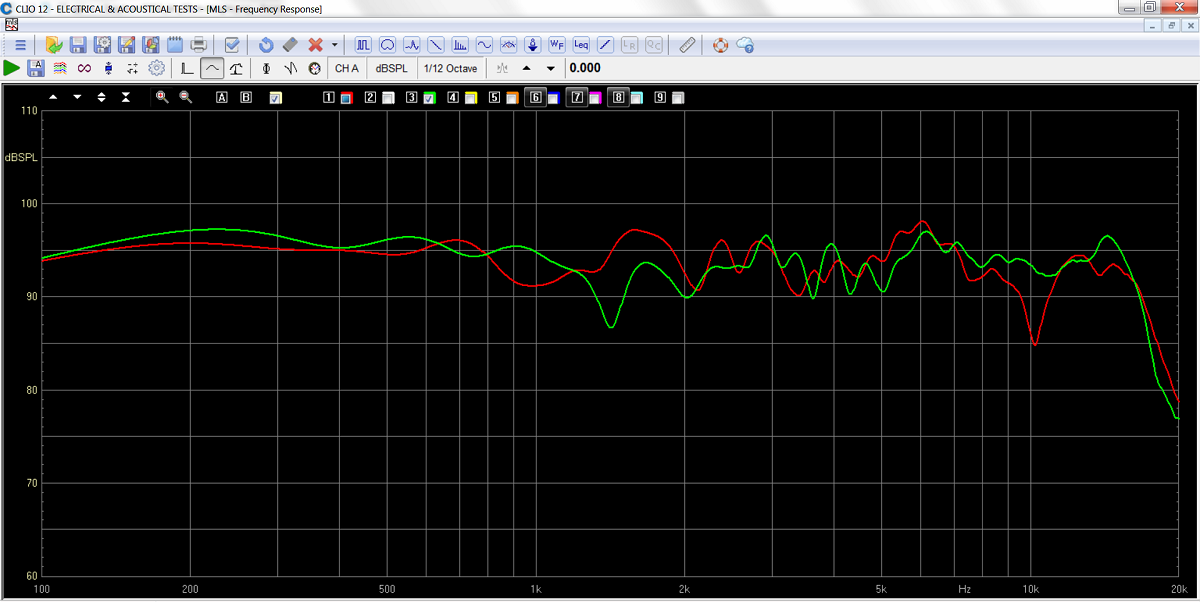
Frequency response of the two kits - as-is - that is with the actual crossovers, not knowing at this point one capacitor was 20 uF and the other 50 uF! Luckily I didn't burn the tweeter with the 50 uF in front. Actually pretty impressive balance of midrange and treble. I've had modern coax drivers that did worse than this.
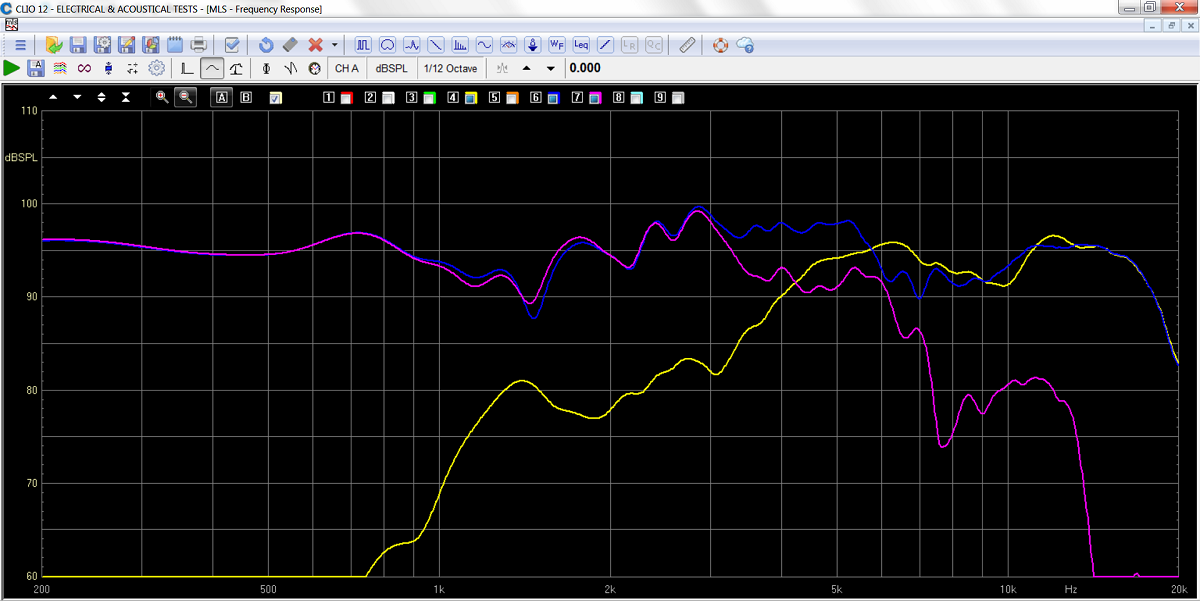
After replacing the capacitor with a new 8.2 uF PP cap, this is what it
looks like.
The elevated plateau around 2-5 kHz is very much to be heard. Makes most
records unlistenable.
Crossover v1, 4th order
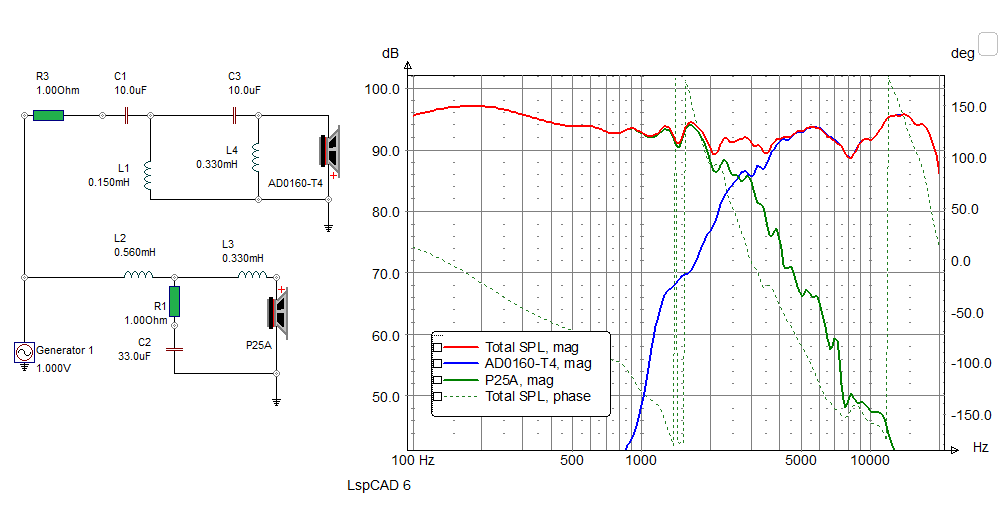
Above a crossover (v1) based on actual measurements and targeting a point of
crossover somewhat lower to reduce beaming from the P25A driver. Beaming
is quite a serious issue when we're talking a 10" driver doing upper-mid
and lower-treble. Despite the pretty textbook 4th order crossover the
tweeter has to be connected with reverse polarity due to the acoustic
depth of the P25A driver.
This did sound much better than the supplied crossover, but also a
little muted in some ways.
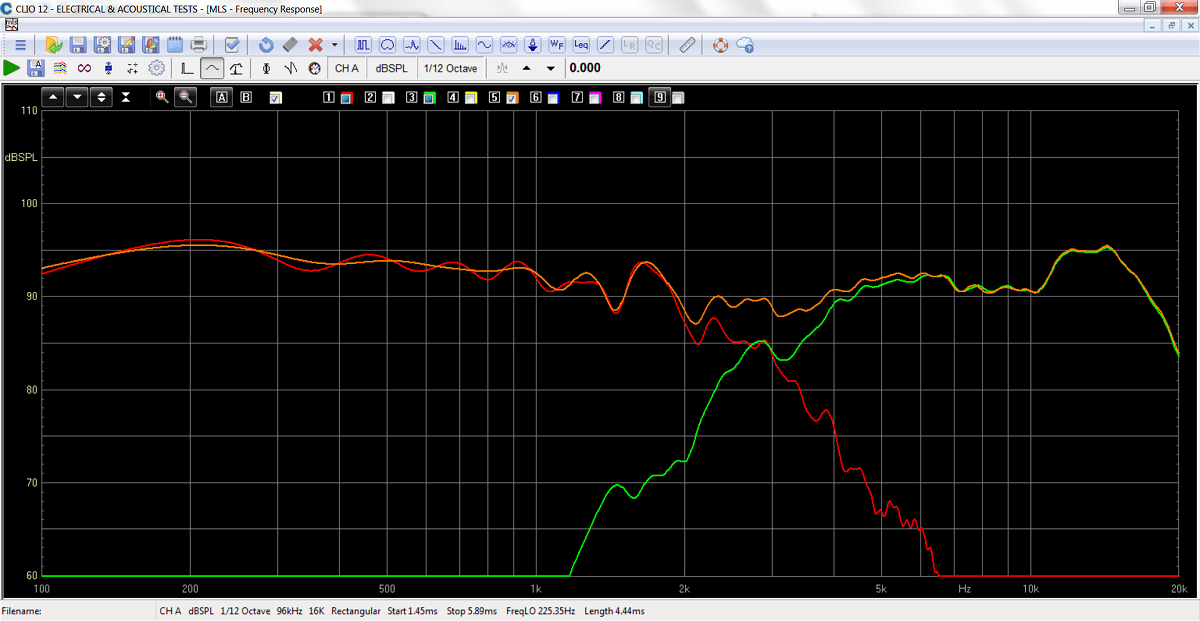
Based on modeling I set up a 4th order crossover (v1) with a point of
crossover just below 3 kHz.
Crossover v2
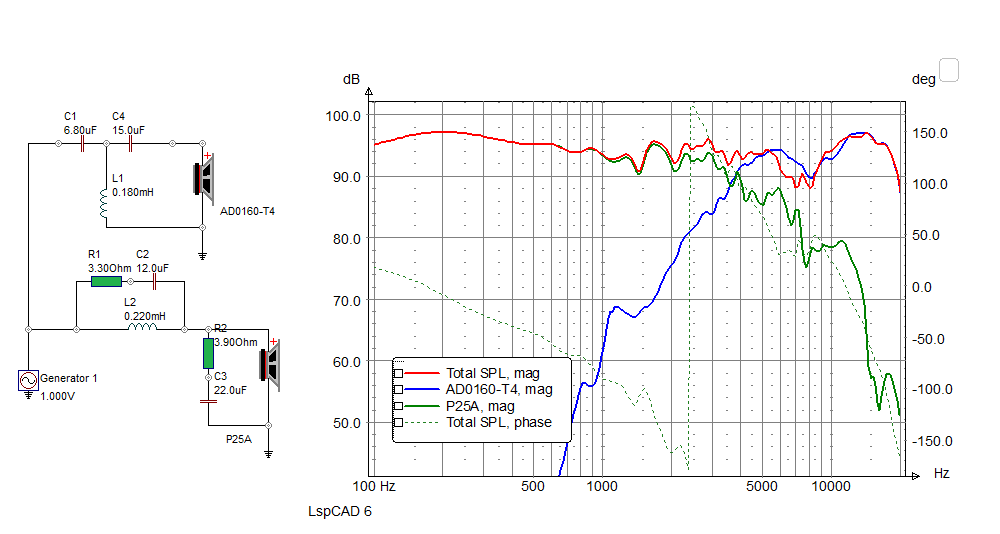
Above another simulation (v2) where I tried to run the P25A as much 1st
order as possible. Making the roll-off on a driver that contrary to most
modern drivers has a declining frequency response, is quite a challenge
because L2 cannot be very high, but I wanted to tame the broad peak at
around 3 kHz - because 3 kHz hurts if too high in level. Phase wise not
too nice in upper treble, but all depends on listening height.
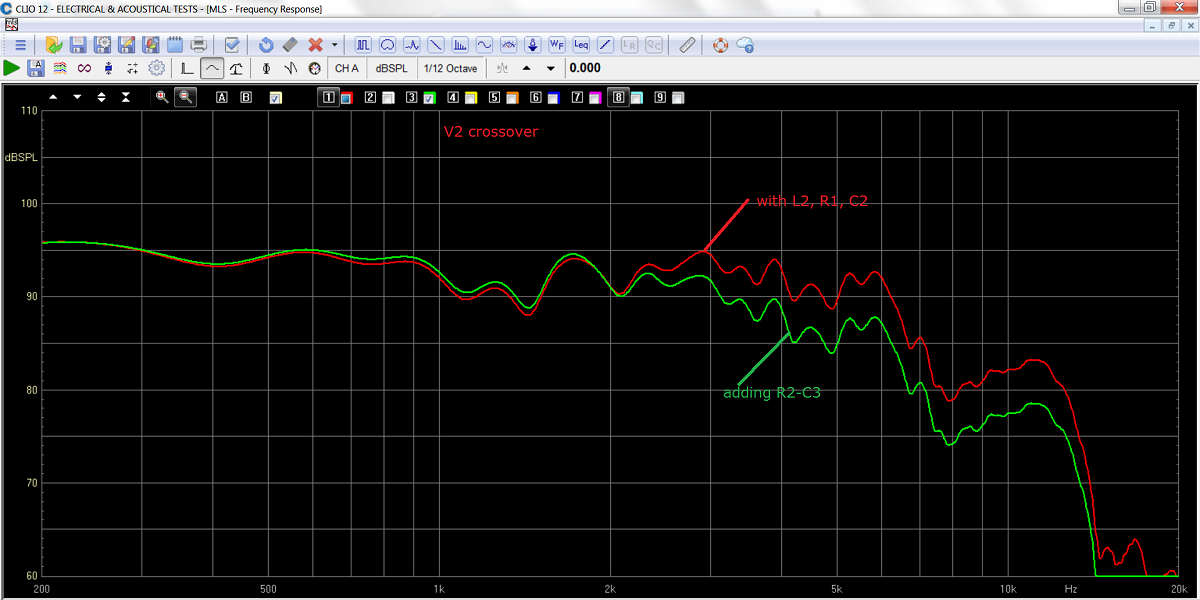
Crossover v2:
P25A low-pass section from various steps. L2/R1/C2 flattens the
frequency response.
R2/C3 creates target roll-off.
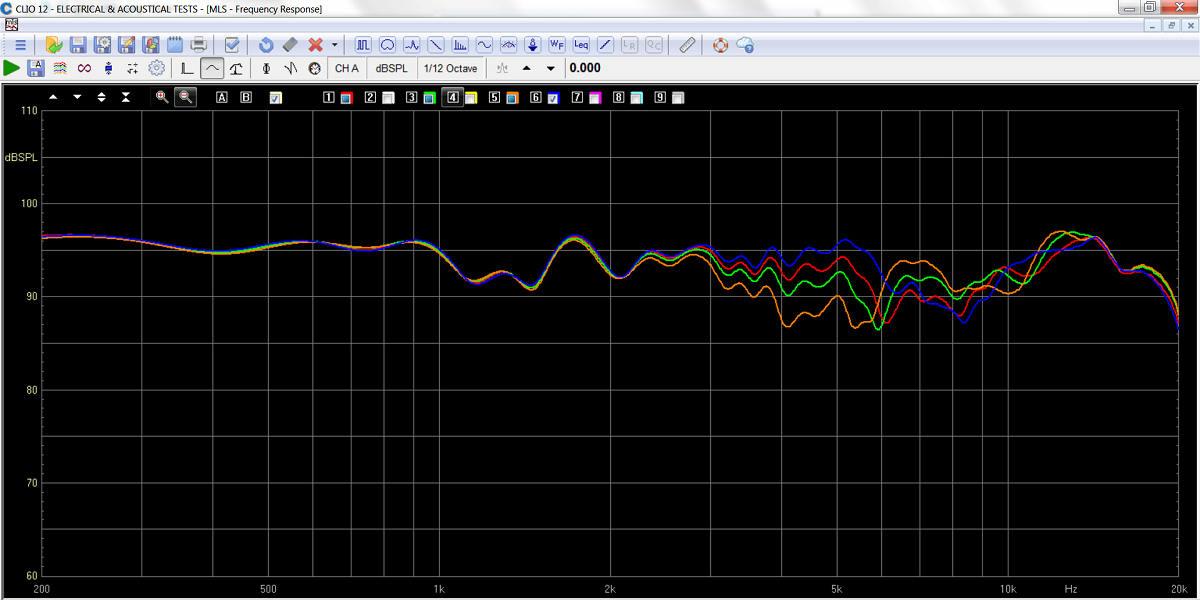
V2 from various heights measured at ½ meter distance from P25A height to
AD-0160/T4 height. Some crossover lobing but not too bad.
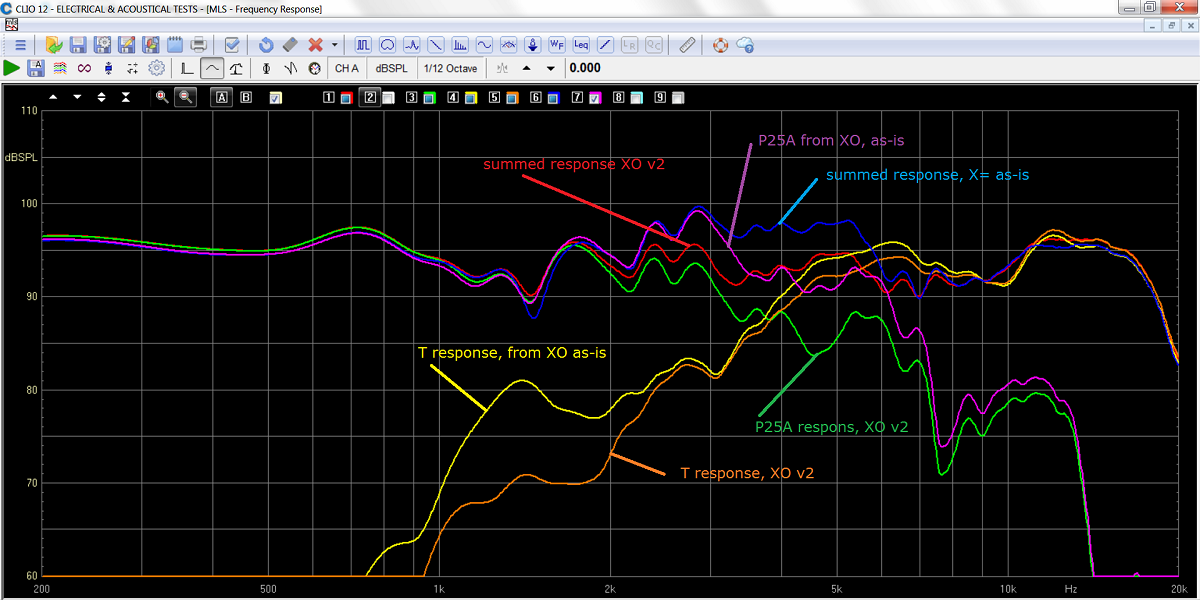
Comparing the as-is crossover, v0, with v2.
The plateau around 2-5 kHz is gone producing an overall balanced
performance. The tweeter "as-is" has much too much energy around 1.5
kHz, now gone. Beaming of the P25A is reduced from the better roll-off
(green).
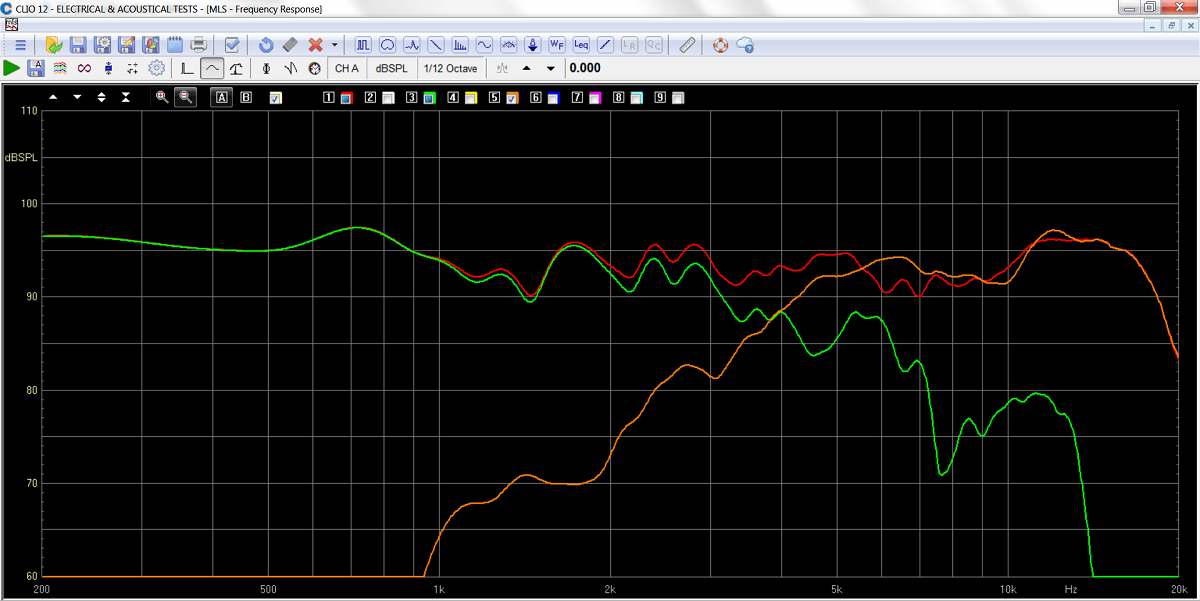
v2 alone.
Setting up v1 and v2 crossover I used standard PP caps to make it all work. Later I thought I'd try replacing all caps with Superior-Z to hear what would happen - and I was quite shocked to hear the difference! I don't think the Philips AD 0160/T4 has ever been treated so generously - but it delivers. Smooth and ear-friendly, transparent, etc. Naively I didn't expect these vintage drivers to deliver to the very best of crossover components, but they do. I'm beginning to think I should keep these P25As for demonstration on what 50-60 years old drivers can do.
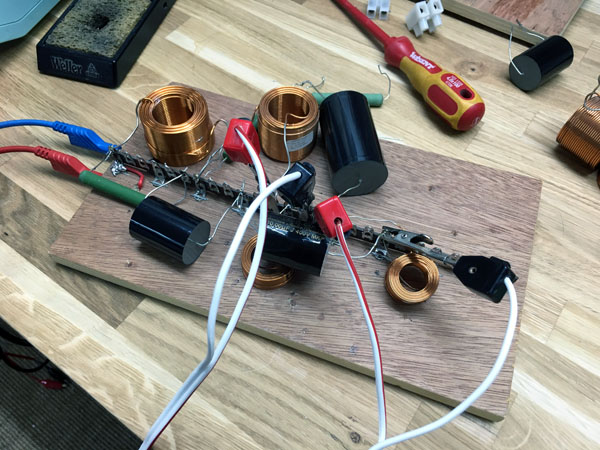
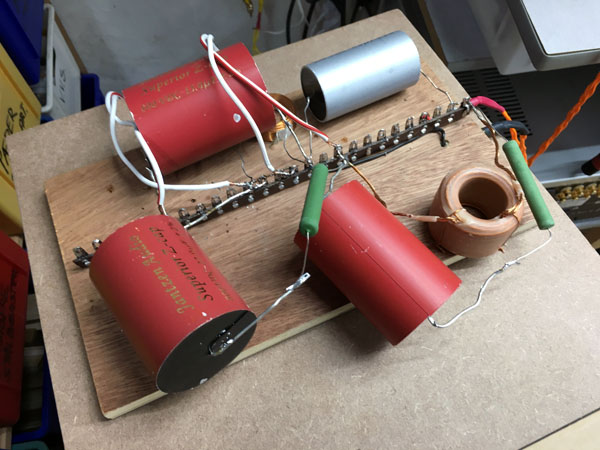
CrossCap to the left (v1) and Superior/Silver-Z (v2) to the right.
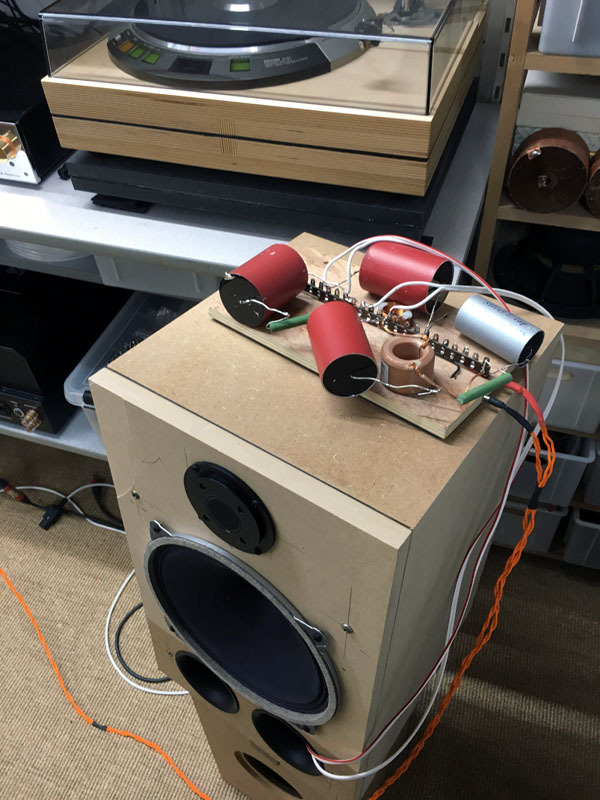
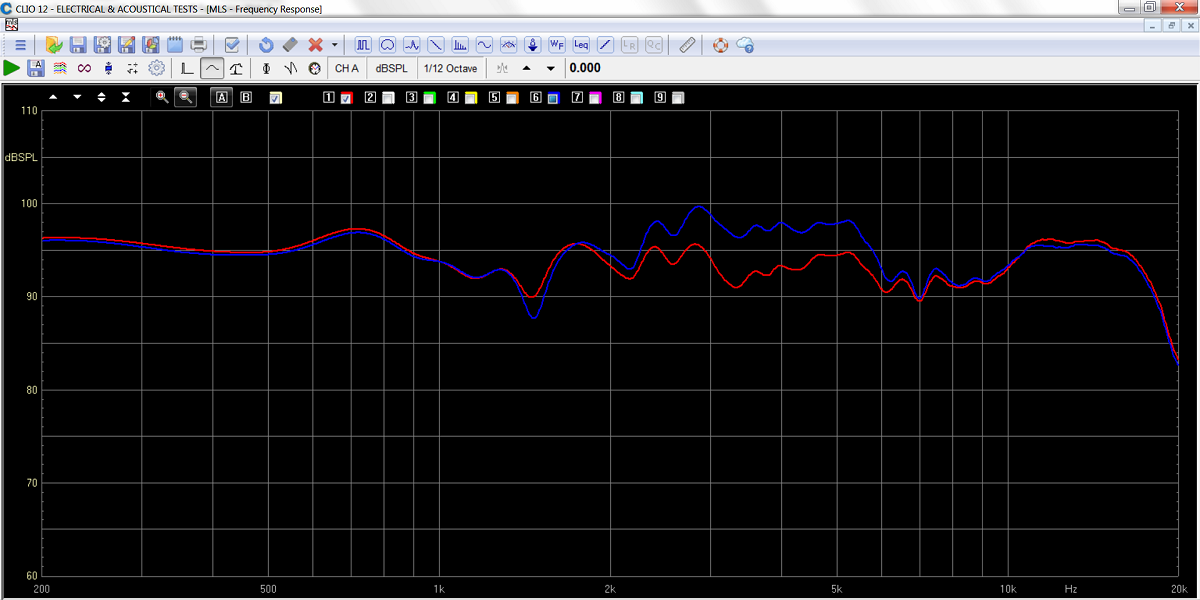
Comparing summed response of "as-is" and v2.
I've seen suggestions on the web for 100 litre cabinets for the P25A and
I think this is what it takes, maybe even with some sort of aperiodic
tuning a la Gilbert Briggs, a slotted back with a sheet of felt on top.
Currently I demonstrate these Isophons on top of my bass boxes fitted
with 10" Faital 10RS350 and driven by a Hypex FA251. Read
here. I run the Hypex with as high gain as possible
and the Isophon is run from my EAR-861 with a 80 Hz high-pass filter and
slightly reduced gain. Read
here. My bass boxes are fairly efficient - but
nowhere near 96-97 dB. I certainly don't turn up the volume very much on
the speakers. True speakers for flea-powered SET amps - and the like.
Conclusion: Very good for a bad weather
project!
( - and we had some "schlechtwetter"
days here in May 2019)